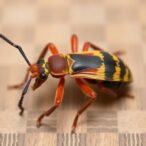
In the ceaselessly changing realms along tropical and subtropical coastlines, mangrove ecosystems stand as a testament to nature’s resilience and ingenuity. These salt-tolerant trees thrive where few others dare to survive—zones of fluctuating tides, saline soils, and periodic inundation. What has recently captured the imagination of sustainability scientists and food system researchers is the underlying adaptive strategy that mangroves epitomize: diversification across multiple root systems as a mechanism for resilience and productivity. Drawing inspiration from this natural blueprint, a groundbreaking conceptual framework has now been proposed to rethink sustainable food systems—a framework that centers diversification not merely as a tactic but as the fundamental root underpinning human and planetary health.
This innovative approach emerges in the context of unprecedented “polycrises” confronting global food systems—interlocking challenges of climate change, biodiversity loss, water scarcity, social inequities, and economic instability. Traditional models of agricultural intensification or monoculture specialization have proven insufficient, or at times even deleterious, in addressing these multifaceted threats. The new knowledge-to-action framework metaphorically invokes the mangrove’s network of roots sprawling into different niches, performing complementary functions that collectively stabilize the ecosystem. Translating this metaphor, the authors argue that sustainable food systems require simultaneously diversified practices, species, socio-economic structures, and governance mechanisms that are contextually responsive and dynamically adaptive.
Mangroves showcase a complex structural diversification: pneumatophores, prop roots, stilt roots, and buttresses each serve specific adaptive roles, from oxygen uptake under waterlogged soils to mechanical stabilization against storm surges. This natural diversification allows mangrove forests to flourish despite extreme environmental variability. Similarly, the authors propose that food systems should integrate a plurality of “roots”: diverse crop species and varieties, varied agricultural techniques, multiple supply chains, and inclusive stakeholder participation. The key insight is that resilience and productivity emerge not from uniformity but from heterogeneity and dynamic flexibility.
.adsslot_JqC9G5dU7Q{width:728px !important;height:90px !important;}
@media(max-width:1199px){ .adsslot_JqC9G5dU7Q{width:468px !important;height:60px !important;}
}
@media(max-width:767px){ .adsslot_JqC9G5dU7Q{width:320px !important;height:50px !important;}
}
ADVERTISEMENT
Importantly, this diversification is not arbitrary. Mangrove root systems reflect empirical optimization tailored to contemporary environmental contexts. Likewise, the proposed food system framework stresses the necessity of situational reflexivity—continuous monitoring, feedback loops, and iterative adaptation aligned with evolving social and ecological conditions. In practical terms, this entails harnessing local knowledge, combining scientific innovations, and fostering governance structures that enable experimentation and course correction. By doing so, food systems can better absorb shocks, redistribute risks, and capitalize on emerging opportunities.
This concept of diversification directly confronts the “polycrisis” nature of global food systems, where no single intervention can simultaneously resolve the constellation of interrelated problems. Prior attempts at sustainable intensification have often narrowly focused on yield improvements or reduced environmental footprints in isolation. The mangrove metaphor, by contrast, emphasizes interconnected processes that collectively nurture ecosystem multifunctionality and social equity. Diversified agroecological production can conserve biodiversity, enhance soil health, regulate hydrological cycles, and promote nutritional security, all while embedding social justice and community empowerment into the food system fabric.
From a planetary health perspective, embracing diversification resonates deeply with the urgent need to operate within Earth system boundaries. Monocultural agricultural expanses, heavy reliance on synthetic inputs, and rigid globalized supply chains amplify vulnerabilities and ecological degradation. Conversely, diversified food systems create mosaics of habitats, preserve genetic resources, and maintain ecosystem services. They also encourage polyrhythmic temporal dynamics akin to tidal fluctuations—leveraging seasonality, crop rotations, and mixed farming to reduce pest outbreaks and improve resource-use efficiency. The authors underscore that such diversification cannot be superficial or cosmetic; it must be embedded institutionally and economically to enable scale and lasting transformation.
The framework’s novelty lies in seamlessly integrating empirical observability with theoretical rigor and actionability. By emphasizing measurable diversification metrics across social, ecological, and economic dimensions, it enables robust monitoring and accountability. Moreover, reflexivity entails an openness to learning and reevaluation, requisites often missing from traditional food system policies. This paradigm shift also encourages reimagining stakeholder roles—empowering marginalized farmers, connecting urban consumers with rural producers, and fostering transdisciplinary collaboration. In this way, diversification serves as both a scientific principle and a socio-political strategy for equitable sustainability.
Notably, the metaphor extends beyond the biophysical analogy to signify a philosophical reframing of development pathways. It challenges the linear, reductionist paradigms that have dominated agricultural modernization agendas and offers a systems-oriented lens recognising complexity, uncertainty, and nonlinearity. The mangrove root model exemplifies how multiple functions, vulnerabilities, and adaptations co-exist, contributing to emergent resilience without sacrificing productivity. This paradigm also underscores the interdependence of human well-being and ecological integrity—concepts often siloed in policy discourse but intrinsically linked in nature.
The implications for research and policy are profound. First, future investigations must prioritize interdisciplinary approaches that elucidate how diversified practices synergize across scales, from microbe-plant interactions in the soil to global trade dynamics. Second, policy frameworks should incentivize diversified cropping systems, conservation agriculture, diversified market access, and equitable governance. The authors highlight emerging experimental platforms, living labs, and participatory models as promising modalities to operationalize the framework. These innovations provide fertile ground to test context-specific diversification strategies, assess trade-offs, and adjust governance accordingly.
Socio-economic dimensions are pivotal in this transformation. Diversification fosters livelihood resilience by reducing dependency on single crops or markets, thus cushioning rural communities against economic shocks. It supports locally adapted knowledge systems, cultural heritage, and diversified diets fundamental to nutrition and health. Concurrently, diversified market channels enable inclusive participation of smallholders and indigenous peoples, amplifying agency and ensuring that benefits accrue to those historically marginalized. The framework thus interweaves ecological and social justice concerns, championing food sovereignty as a cornerstone of planetary health.
While the mangrove metaphor powerfully anchors the framework, its application demands careful contextualization. Coastal mangroves thrive in highly specific ecotones; food systems span diverse agroecological zones with varying biophysical, cultural, and economic settings. Hence, diversification strategies must be tailored to regional realities while maintaining core principles. For instance, in arid regions, water-efficient polycultures might substitute for tidal resilience traits found in mangroves; in urban contexts, diversification might focus on integrating peri-urban agriculture with circular waste systems. The framework’s flexibility makes it widely applicable without sacrificing scientific robustness.
Crucially, this knowledge-to-action framework acts as a catalyst for transformative change rather than a static model. It calls for embedded reflexivity within institutions—mechanisms for continuous learning, adaptive management, and transparent stakeholder engagement. Such dynamic governance approaches mirror the mangrove’s own adaptive cycles and ecological feedbacks. In a world increasingly marked by uncertainty and rapid change, this agility will be indispensable for food systems to maintain equilibrium and fulfill multiple sustainability objectives simultaneously.
The intersectionality of challenges addressed by this approach also opens avenues for novel cross-sectoral collaborations. Biodiversity conservationists, climate resilience planners, nutritionists, social scientists, and policymakers can co-create diversified solutions that transcend disciplinary silos. By using the mangrove root metaphor as a common conceptual language, stakeholders from disparate fields can align efforts and generate integrative strategies. This enhances the practical feasibility and societal acceptance of diversified food system transitions at scale.
In sum, this bold reimagining of sustainable food systems through the mangrove metaphor champions diversification as the fundamental root of resilience, equity, and planetary health. It moves beyond simplistic “silver bullet” approaches to embrace complexity and systemic interdependencies. By grounding itself in empirical observability, reflexivity, and contextual adaptability, the framework lays a scientifically credible and pragmatically actionable foundation for future food system transformations. As humanity grapples with intertwined environmental and social crises, the model offers a hopeful blueprint inspired by nature itself—one that weaves together multiple strands of diversity into a cohesive, thriving whole.
As this framework gains traction, it will likely stimulate innovative research endeavors, policymaking reforms, and grassroots initiatives aimed at redesigning food systems holistically. Through embracing the wisdom embedded in mangrove root systems, societies may find new pathways toward harmonious coexistence with the planet, ensuring nourishment for both humans and the ecosystems that sustain us.
Subject of Research:
A conceptual framework inspired by mangrove ecosystem diversification, addressing sustainable food systems and their transformation in response to polycrises impacting human and planetary health.
Article Title:
A mangrove metaphor for sustainable food systems centres diversification as the root of human and planetary health.
Article References:
Baur, P., Petersen-Rockney, M., Bowles, T. et al. A mangrove metaphor for sustainable food systems centres diversification as the root of human and planetary health.
Nat Food (2025). https://doi.org/10.1038/s43016-025-01185-0
Image Credits: AI Generated
Tags: adaptive strategies for resiliencebiodiversity in food productionclimate change and agriculturediversification in food systemsecological metaphor in sustainabilitygovernance in food systemsinnovative agricultural practicesmangrove ecosystemspolycrisis and food securityresilience in ecological systemssocio-economic structures in sustainabilitysustainable agriculture strategies



